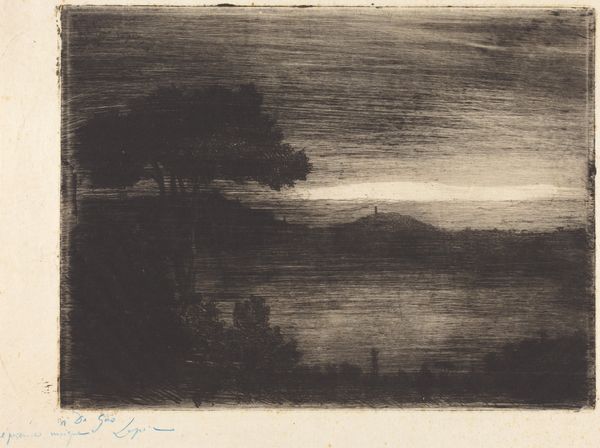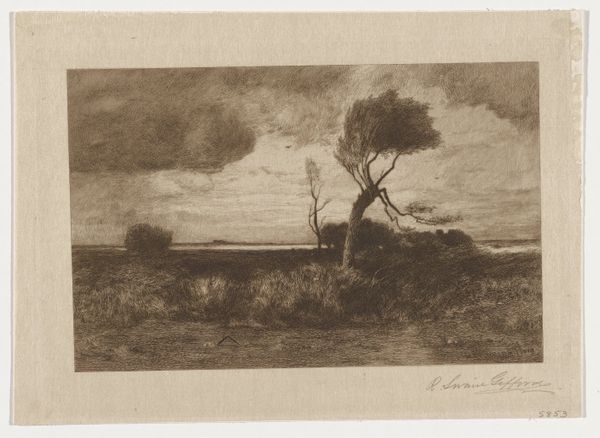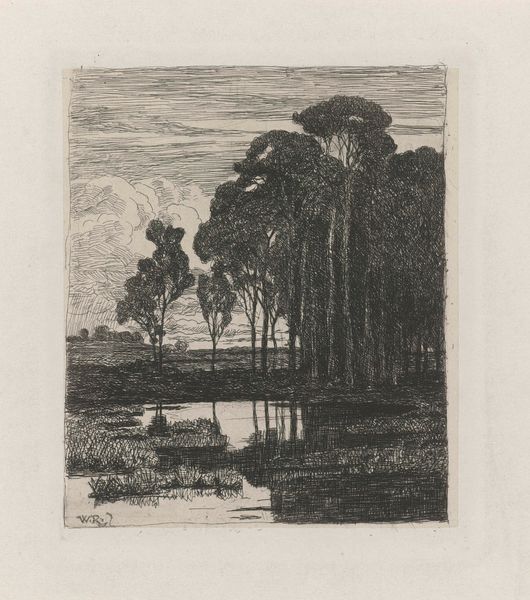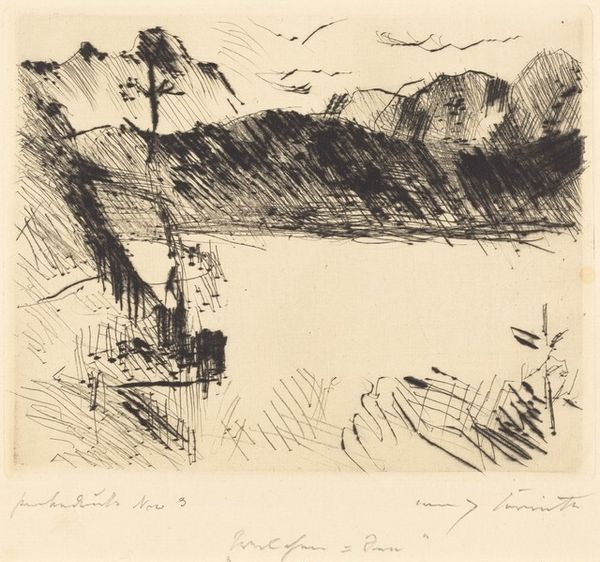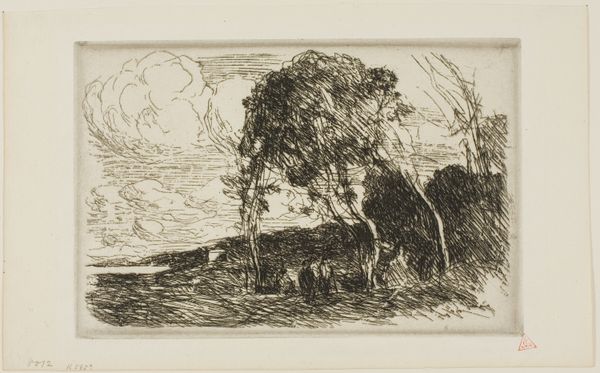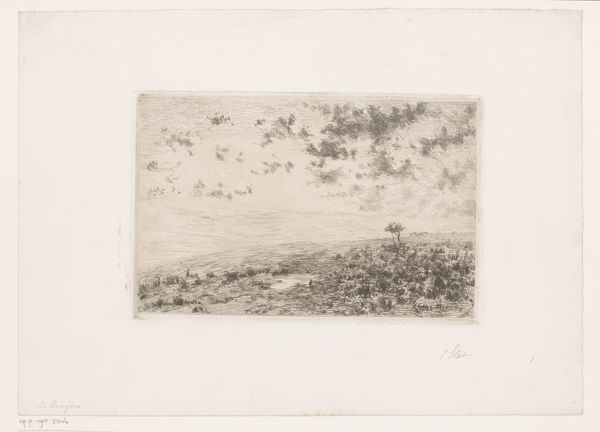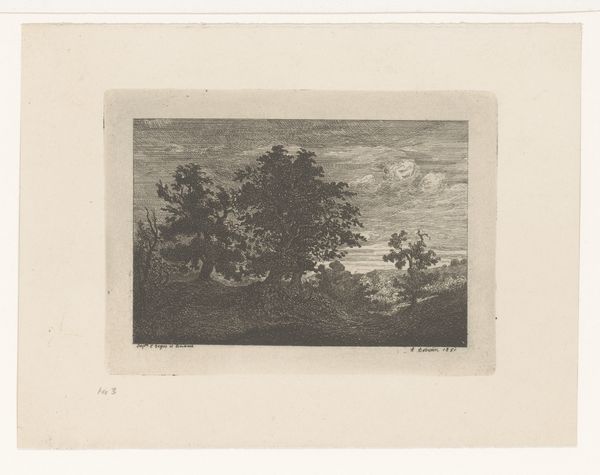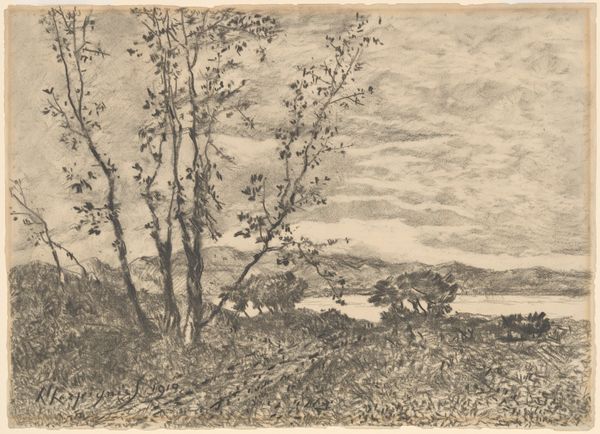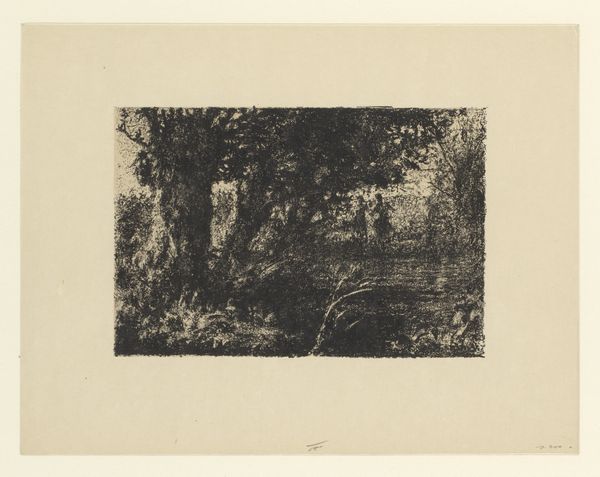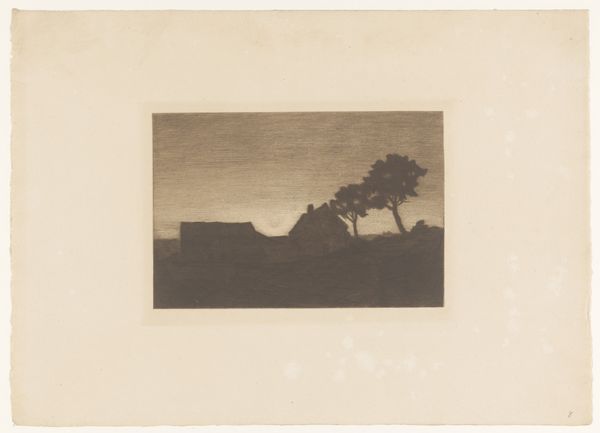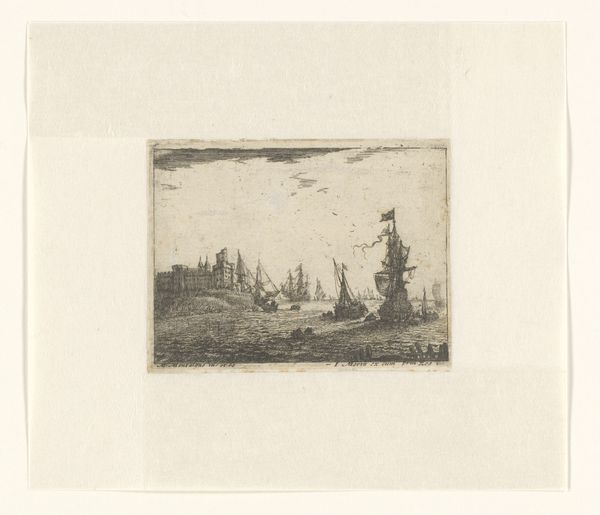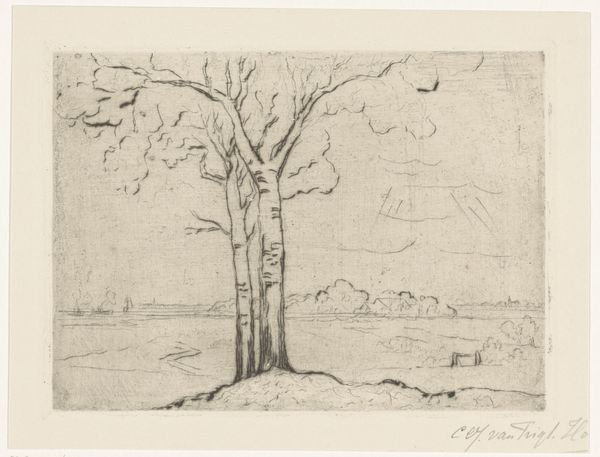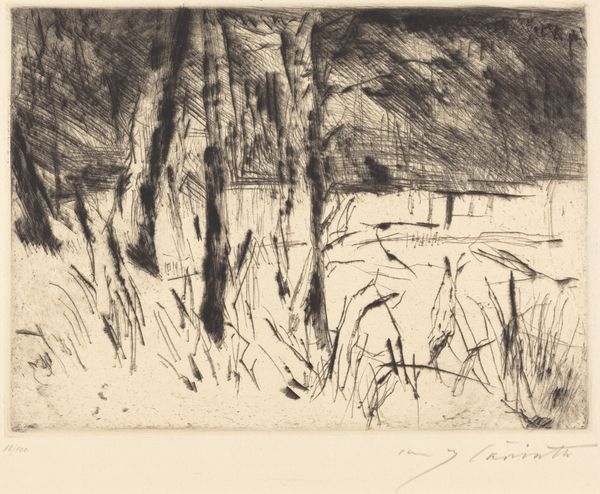
drawing, print
#
pencil drawn
#
photo of handprinted image
#
drawing
#
amateur sketch
#
light pencil work
# print
#
pencil sketch
#
incomplete sketchy
#
sketchbook drawing
#
pencil work
#
tonal art
#
remaining negative space
Dimensions: Image: 4 5/8 × 6 1/4 in. (11.8 × 15.8 cm) Plate: 4 3/4 × 6 5/16 in. (12 × 16 cm) Sheet: 11 1/4 × 13 1/2 in. (28.5 × 34.3 cm)
Copyright: Public Domain
Curator: Let's consider John-Lewis Brown's "Paysage," a work created sometime between 1847 and 1890. It’s currently residing here at the Metropolitan Museum of Art. What strikes you initially about it? Editor: Stark simplicity. The dramatic contrast between dark and light pulls me right in, almost a brooding presence despite its humble scale. You immediately get the impression that labor went into creating this tonal, hand-printed piece. Curator: I find the deliberate simplicity equally compelling. Brown, although known for his equestrian scenes and depictions of elegant society, also created landscapes. Perhaps here we are seeing a conscious decision to step away from that image and present a democratic, "everyday" landscape. Editor: Absolutely, it’s fascinating how the choice of printmaking – a readily reproducible medium - pushes back against the exclusivity typically associated with landscapes created for elite consumption. This image democratizes not only the subject matter, but potentially, it democratizes its very means of consumption. Curator: It's interesting to think about how Brown might have positioned this work within his oeuvre. Was this piece destined for public consumption or was it a study for personal artistic exploration? Was this image for Brown an effort in image control? I find myself thinking about who his patrons may have been at the time and what sort of impact their preferences may have had on this work. Editor: It makes you consider the labor behind this seemingly simple landscape. Each print bears the mark of its making; the unevenness of the ink, the slight variations - it’s a material testament to the artistic process itself. Each imperfect line feels like an emphatic artistic statement against industrialized processes. Curator: Thinking about the historical context, France was undergoing considerable social and political upheaval during the period this was created. Art was certainly playing a key role in critiquing social classes and values at this time, a role often supported by the bourgeoisie. Editor: The image definitely makes me pause and consider not just what it represents, but how its very existence challenges art's traditional relationship with class and labor. The piece quietly advocates for something more accessible, maybe something a bit rougher around the edges, maybe something for the working class. Curator: These sorts of landscapes encourage us to ponder its potential social commentary through what might be seen as pastoral tranquility. Editor: And prompts us to acknowledge art's role in challenging societal structures through its tangible form.
Comments
No comments
Be the first to comment and join the conversation on the ultimate creative platform.
